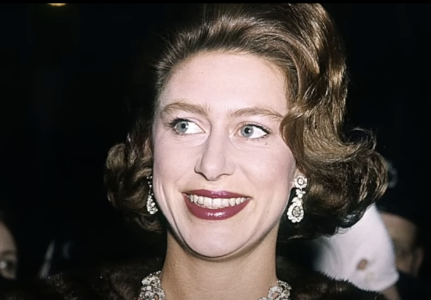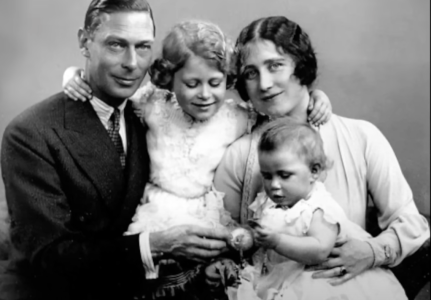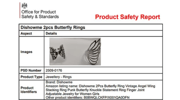Behind the crown: A bombshell claim just rocked the Royal Archives
- Replies 37
The British royal family has always been a source of fascination, intrigue, and, let’s be honest, a fair bit of scandal.
But just when you think you’ve heard it all, a new book comes along and drops a revelation that leaves even the most seasoned royal watchers gobsmacked.
The latest bombshell? A claim about a princess that’s got everyone talking—and it’s not your run-of-the-mill royal gossip.
Princess Margaret, the younger sister of Queen Elizabeth II, was known for her glamour, wit, and rebellious streak.
But according to Pulitzer-nominated biographer Meryle Secrest, there may have been more to Margaret’s infamous mood swings and tempestuous behaviour than previously thought.
In her new book, Princess Margaret and the Curse: An Inquiry into a Royal Life, Secrest suggests that Margaret may have suffered from fetal alcohol syndrome (FAS)—a condition that wasn’t even identified until decades after Margaret’s birth in 1930.
Fetal alcohol syndrome is caused when a child is exposed to alcohol in the womb, leading to a range of lifelong behavioural and physical challenges.

While Secrest notes that Margaret didn’t display the physical symptoms typically associated with FAS, she points to the princess’s lifelong struggles with migraines, learning difficulties, and emotional volatility as possible signs of the disorder.
The book’s claim hinges on the drinking habits of the Queen Mother, who, according to historical letters and reports, was fond of a tipple.
At the time, the dangers of drinking during pregnancy were unknown—FAS wasn’t officially recognised until 1973, more than 40 years after Margaret’s birth.
In fact, the Queen Mother herself wrote in a 1925 letter that she was 'turned off' by alcohol during her pregnancy with Elizabeth, but there’s no evidence she abstained while carrying Margaret.
Margaret’s early years were anything but ordinary. Born fourth in line to the throne, her world was upended when her uncle, Edward VIII, abdicated, making her father King George VI and her sister the heir presumptive.
Despite the upheaval, the sisters shared a governess, Marion 'Crawfie' Crawford, who later wrote candidly about their childhood in her memoir, *The Little Princesses*.
Crawfie described Margaret as 'often naughty' and delighting in defiance, while Elizabeth (affectionately called Lilibet) was the dutiful, motherly sibling.
Margaret’s mischievousness and flair for performance were evident from a young age—a trait that would both endear her to the public and frustrate those closest to her.

As she grew older, Margaret became known for her sharp wit and dazzling presence at social events. But behind the scenes, her life was marked by tension and excess.
The death of her father at just 56 deepened the rift between Margaret and the Queen Mother.
Source: British Pathe / Youtube.
Despite living just a floor apart in Clarence House, mother and daughter often communicated through letters delivered by their butlers.
Margaret’s adult life was a whirlwind of parties, late nights, and, reportedly, heavy drinking. According to royal biographer Tina Brown, Margaret’s daily routine included vodka and orange as a midday 'pick-me-up,' half a bottle of wine with lunch, cocktails in the afternoon, wine with dinner, and several whiskies before bed.
The Queen Mother, ironically, disapproved of her daughter’s lifestyle, even as her own fondness for a drink was well known.
Princess Margaret passed away in 2002 at the age of 71, after years of declining health, including several strokes.
Her legacy is a complex one: she was a symbol of royal glamour and rebellion, but also a woman who struggled with personal hardships and the weight of expectation.
Read more: The Royal Mint has released a stunning new coin—but it’s who’s on it that has everyone talking

We know our readers have strong opinions and sharp memories—so what’s your take on this royal revelation? Have you read any of the royal biographies mentioned, or do you have your own memories of following Margaret’s life in the headlines? Share your opinions, stories, or questions in the comments below!
But just when you think you’ve heard it all, a new book comes along and drops a revelation that leaves even the most seasoned royal watchers gobsmacked.
The latest bombshell? A claim about a princess that’s got everyone talking—and it’s not your run-of-the-mill royal gossip.
Princess Margaret, the younger sister of Queen Elizabeth II, was known for her glamour, wit, and rebellious streak.
But according to Pulitzer-nominated biographer Meryle Secrest, there may have been more to Margaret’s infamous mood swings and tempestuous behaviour than previously thought.
In her new book, Princess Margaret and the Curse: An Inquiry into a Royal Life, Secrest suggests that Margaret may have suffered from fetal alcohol syndrome (FAS)—a condition that wasn’t even identified until decades after Margaret’s birth in 1930.
Fetal alcohol syndrome is caused when a child is exposed to alcohol in the womb, leading to a range of lifelong behavioural and physical challenges.

A new biography claims Princess Margaret may have suffered from fetal alcohol syndrome due to the Queen Mother’s drinking during pregnancy, despite the condition not being medically recognised until decades later. Image source: History Tea Time with Lindsay Holiday / Youtube.
While Secrest notes that Margaret didn’t display the physical symptoms typically associated with FAS, she points to the princess’s lifelong struggles with migraines, learning difficulties, and emotional volatility as possible signs of the disorder.
The book’s claim hinges on the drinking habits of the Queen Mother, who, according to historical letters and reports, was fond of a tipple.
At the time, the dangers of drinking during pregnancy were unknown—FAS wasn’t officially recognised until 1973, more than 40 years after Margaret’s birth.
In fact, the Queen Mother herself wrote in a 1925 letter that she was 'turned off' by alcohol during her pregnancy with Elizabeth, but there’s no evidence she abstained while carrying Margaret.
Margaret’s early years were anything but ordinary. Born fourth in line to the throne, her world was upended when her uncle, Edward VIII, abdicated, making her father King George VI and her sister the heir presumptive.
Despite the upheaval, the sisters shared a governess, Marion 'Crawfie' Crawford, who later wrote candidly about their childhood in her memoir, *The Little Princesses*.
Crawfie described Margaret as 'often naughty' and delighting in defiance, while Elizabeth (affectionately called Lilibet) was the dutiful, motherly sibling.
Margaret’s mischievousness and flair for performance were evident from a young age—a trait that would both endear her to the public and frustrate those closest to her.

The book alleges Princess Margaret showed possible symptoms such as mood swings, migraines and learning difficulties. Image source: History Tea Time with Lindsay Holiday / Youtube.
As she grew older, Margaret became known for her sharp wit and dazzling presence at social events. But behind the scenes, her life was marked by tension and excess.
The death of her father at just 56 deepened the rift between Margaret and the Queen Mother.
Source: British Pathe / Youtube.
Despite living just a floor apart in Clarence House, mother and daughter often communicated through letters delivered by their butlers.
Margaret’s adult life was a whirlwind of parties, late nights, and, reportedly, heavy drinking. According to royal biographer Tina Brown, Margaret’s daily routine included vodka and orange as a midday 'pick-me-up,' half a bottle of wine with lunch, cocktails in the afternoon, wine with dinner, and several whiskies before bed.
The Queen Mother, ironically, disapproved of her daughter’s lifestyle, even as her own fondness for a drink was well known.
Princess Margaret passed away in 2002 at the age of 71, after years of declining health, including several strokes.
Her legacy is a complex one: she was a symbol of royal glamour and rebellion, but also a woman who struggled with personal hardships and the weight of expectation.
Read more: The Royal Mint has released a stunning new coin—but it’s who’s on it that has everyone talking
Key Takeaways
- A new biography claims Princess Margaret may have suffered from fetal alcohol syndrome due to the Queen Mother’s drinking during pregnancy, despite the condition not being medically recognised until decades later.
- The book alleges Princess Margaret showed possible symptoms such as mood swings, migraines and learning difficulties, which could have influenced her personality and behaviour throughout her life.
- At the time of Margaret’s birth in 1930, little was known about the risks of alcohol during pregnancy, and the Queen Mother reportedly wasn’t warned against drinking while expecting.
- The biography highlights ongoing tensions between Margaret and the Queen Mother, including disagreement over Margaret’s later-life drinking and partying habits.
We know our readers have strong opinions and sharp memories—so what’s your take on this royal revelation? Have you read any of the royal biographies mentioned, or do you have your own memories of following Margaret’s life in the headlines? Share your opinions, stories, or questions in the comments below!
Last edited:







